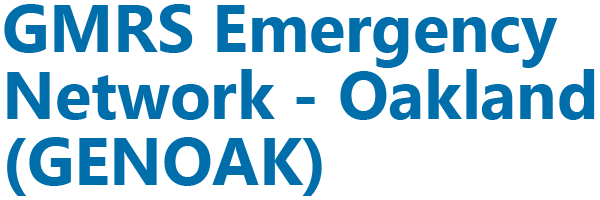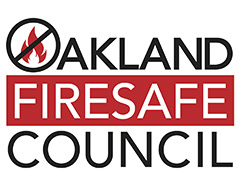FRS 2-Way Radios
FRS for use within Communities
With their limited range and low cost, FRS 2-way radios are ideal for communications among individuals within a community such as a neighborhood group, CERT Team, apartment building, organization, hub, etc. For example, neighbors can check in with one another during or after a disaster when the cellular phone network may be overloaded or damaged. And CERT Team members can use FRS radios to communicate with their Incident Command Center.
The lower-power FRS radio channels will lessen the chance of one group interfering with another, especially if channels are coordinated to be different among adjacent community groups.
FRS Service and Radios
FRS (Family Radio Service) and GMRS (General Mobile Radio Service) are FCC-regulated radio services designed for short-distance, 2-way communication. Radios that work with both of these services used to be called “FRS/GMRS” radios, FCC rules now classify these as “FRS-only” (FRS) and “GMRS-only” (GMRS) radios, based on their features and capabilities.
FRS 2-way radios are lower-powered compared with GMRS 2-way radios. FRS is limited by the FCC to transmitting at 2 watts on channels 1 – 7 and 15 – 22 and ½ watt on channels 8 – 14. And FRS radios have, by FCC regulation, fixed antennas that cannot be changed. This is done intentionally to keep the range short in order to reduce interference in crowded areas.
FRS radio range is often stated by manufacturers to be 10 or 15 miles or even much more, but a realistic range for an FRS radio is ½ to 2 miles or so, depending upon conditions. Terrain and obstructions such as hills and buildings can reduce range.
Use of an FRS radio does not require a license from the FCC, unlike GMRS.
Anyone in the local area with an FRS 2-way radio can listen to (monitor) GENOAK communications on Channel 17 (462.600 MHz) with the “Privacy Code” set to 0 or “Off”. FRS radios though are not repeater-capable and cannot talk (transmit) to GENOAK.
Click Here for Details on FRS Radio Frequencies and Channels
Two-way radios by definition transmit and receive voice/data via electromagnetic radio waves. FRS is an FCC-regulated service that utilizes designated radio wave frequencies around 462 and 467 MHz in the Ultra High Frequency (UHF) FM band.
These FRS frequencies are assigned to channels numbered 01 – 22. The FCC updated FRS/GMRS channel/frequency assignments and associated rules in 2017 and all FRS radios sold today should adhere to these new rules.
2-way radios can only communicate with each other by being on the same frequency. Be aware that older FRS-only or FRS/GMRS radios may not adhere to all of the 2017 FCC channel/frequency assignments and users of these radios need to understand the channel/frequency assignments that their particular radios use.
FRS Radio Recommendations
There are a large number of FRS radio models available from long-established companies such as Motorola, Midland and Uniden. Newer companies such as Radioddity, Retevis and Wouxun also offer FRS radios. If you are purchasing an FRS radio for neighborhood use and do not intend to acquire a GMRS license, be sure to check that the radio is FCC-certified as FRS-only.
As of January, 2025, the following FRS radios, listed alphabetically, are examples that can work well for community group use. You can spend more money for more features, but with the limits on power established by the FCC they should all have about the same range. Most of these can be found online and some at retailers such as REI or Big-5 Sporting Goods.
Some FRS radios only come with rechargeable battery packs. While great for keeping batteries out of the landfill, if the power is out for an extended period you may not be able to recharge them. Therefore it is best to select a radio that has both a rechargeable battery pack -and- that also allows standard AAA or AA batteries to be used. It is a good idea for every family to have at least 2 FRS radios and plenty of fresh batteries on-hand.
Note that the GMRS radios communicate with FRS radios on all channels, so if you have a GMRS radio then you can talk with others in your neighborhood who are using their FRS radios.
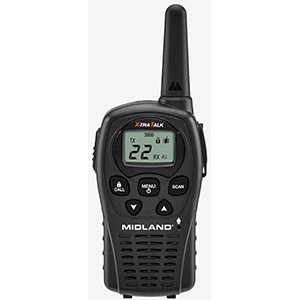
1. Midland LXT500
The Midland LXT500 is a basic FRS radio that comes with a NiMH rechargeable battery pack and can also run on 4 AAA batteries. It is rated as water resistant. It does not include NOAA weather service channels.
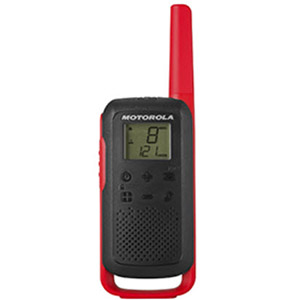
2. Motorola T210
The Motorola T210 Talkabout FRS radio is rated IPX7 water resistant. It does not include NOAA weather service channels. It comes with a NiMH rechargeable battery pack and can also run on 3 AA batteries.
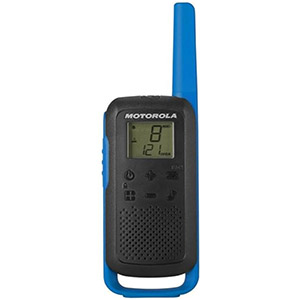
3. Motorola T270
The Motorola T270 Talkabout FRS radio is rated IPX7 water resistant. It does include NOAA weather service channels and alerts. It comes with a NiMH rechargeable battery pack and can also run on 3 AA batteries.
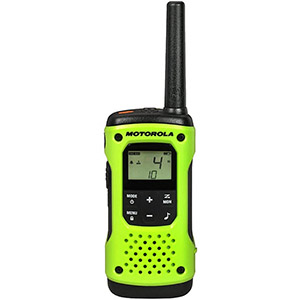
4. Motorola T600
The Motorola T600 Talkabout FRS radio is rated IP67 waterproof (it floats), has a built-in LED flashlight and includes NOAA weather service channels and alerts. It comes with a NiMH rechargeable battery pack and can also run on 3 AA batteries.
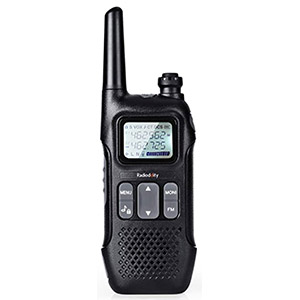
5. Radioddity FS-T1
The Radioddity FS-T1 is a lower-cost FRS radio that has a built-in LED flashlight, FM radio and includes NOAA weather service channels. It also has a top dial volume control. It comes with a USB rechargeable battery pack but does not support separate batteries.
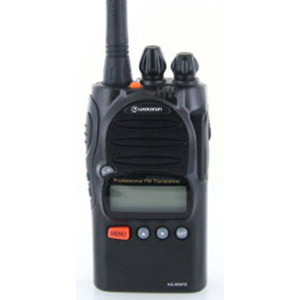
6. Wouxun KG-805F
The Wouxun KG-805F is a “business-grade” FRS radio in the same layout as the KG-805G/KG-905G GMRS radios. It has a built-in FM radio and is rated IP55 water resistant. It comes with a NiMH rechargeable battery pack and an optional AA battery holder is available. More expensive than most other FRS radios.
What about those inexpensive 2-way radios sold on Amazon?
The BaoFeng UV-5R and UV-82HP are examples of popular, inexpensive and quite capable VHF/UHF radios that transmit on FRS/GMRS channels/frequencies. These, however, are not FCC Part 95 certified (as of January, 2025) and as such, they are not legal for FRS/GMRS use and thus cannot be recommended by GENOAK.
Also, these radios have the ability to transmit on some Amateur (Ham) bands/frequencies (VHF/UHF). If you do not have an Amateur (Ham) FCC license, do not transmit on those frequencies! Violators can be subject to seizure of equipment, fines and other civil and criminal penalties by the FCC.
Using and Configuring your FRS Radio
Familiarize yourself with the basic functions of your radio, including how to turn the power on and off, how to change the channel and adjust the volume and how to operate the Push-To-Talk (PTT) button. Some radios have additional settings, including voice activation (VOX), talk confirmation tone, keypad lock and ringer sounds.
“Privacy Codes”
Almost all FRS (and GMRS) radios have the ability to configure what are sometimes referred to as “Privacy Codes” or “Interference Eliminator Codes” for each channel (officially CTCSS/PL tones or DCS codes). These are simply an inaudible frequency tone added to the transmission. A corresponding radio set to the same “Privacy Code” (or to 0 or “Off”) will filter out that tone and then “hear” the transmission, but a radio set to a different “Privacy Code” (other than 0 or “off”) squelches (ignores) the transmission.
“Privacy Codes” are not really private—anyone listening on the channel with the “Privacy Code” set to 0 or “Off” can hear all conversations on that particular channel/frequency regardless of the “Privacy Code” being used. “Privacy Codes” give the illusion that a private “sub-channel” is available, but this is not the case. More details on “Privacy Codes” including mapping between PL code numbers and tone frequencies can be found here.
For these and other reasons, GENOAK recommends that “Privacy Codes” not be used for neighborhood FRS radio communications. If you do use them, just be aware of the implications.
Getting the most out of your FRS Radio
Keep your batteries charged. If your radio uses alkaline batteries and you don’t use it often, remove them so that they don’t leak and damage the radio. Note that some radios lose their programming if the batteries are removed. If your radio has a rechargeable battery pack, determine from the manufacturer or user manual whether it can be left sitting in the charger long-term, or if it’s best stored out of the charger.
Some radios may draw a little current from the battery even when turned off, so learn how to avoid having a dead battery when you need it in an emergency. And always have spare batteries or charged battery packs on-hand.
If your FRS radio is having trouble hearing or being heard by another operator, here are some things you can try to improve the chances of getting your message through:
- Hold the radio between you and the operator you want to reach, with the antenna straight up. Don’t touch the antenna when you are using the radio.
- Hold the radio close enough that the microphone can pick up your voice, about 4 to 6 inches in front of your mouth. Talk somewhat across the microphone, rather than directly into it. And avoid noisy/windy environments if possible.
- If possible, transmit from a location that minimizes any hills, terrain, buildings and foliage between you and the other operator. Sometimes just walking a short distance or to the top of a nearby rise or hill may be enough to improve your signal. Usually the higher in elevation you can be, the better.
- Stepping outside of a home/building may help too. Try not to have the structure in-between you and the other operator that you are trying to reach. If you can’t step outside then being next to a window may help.
